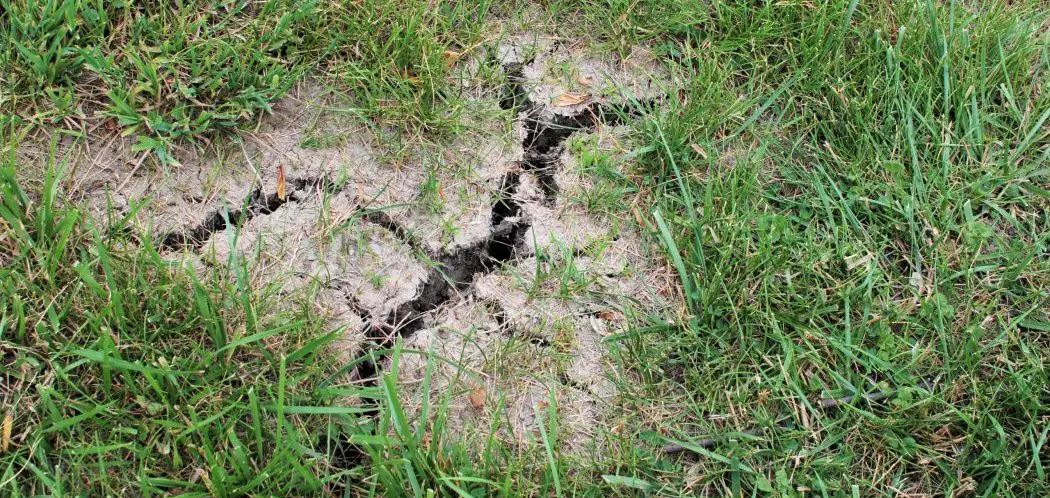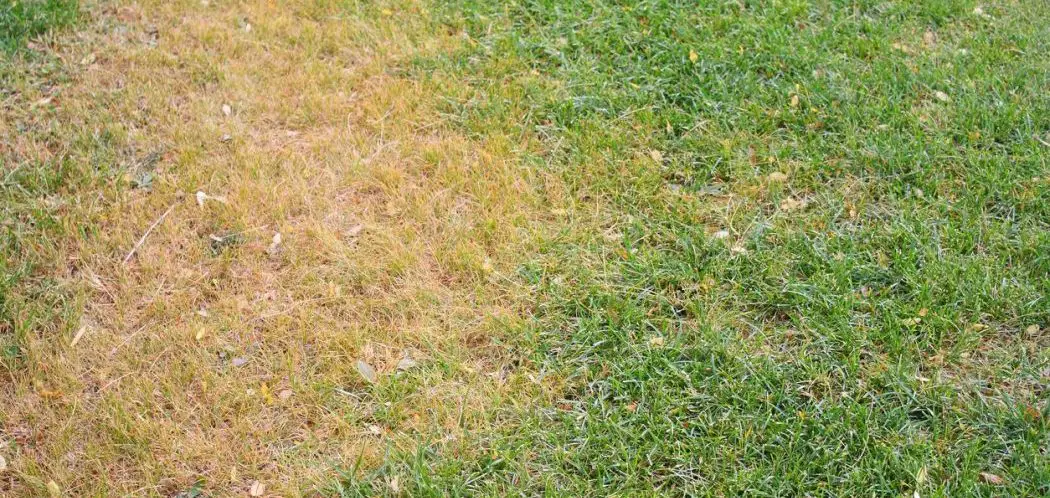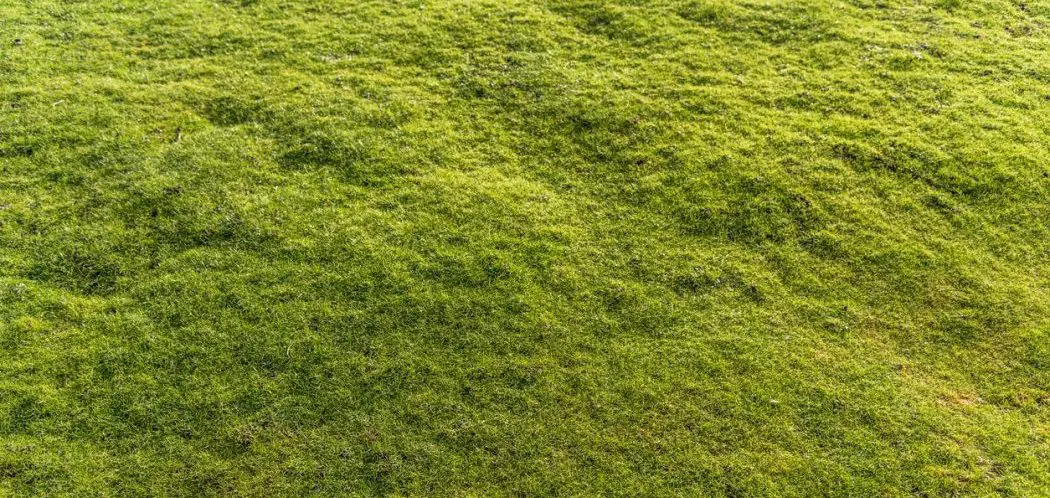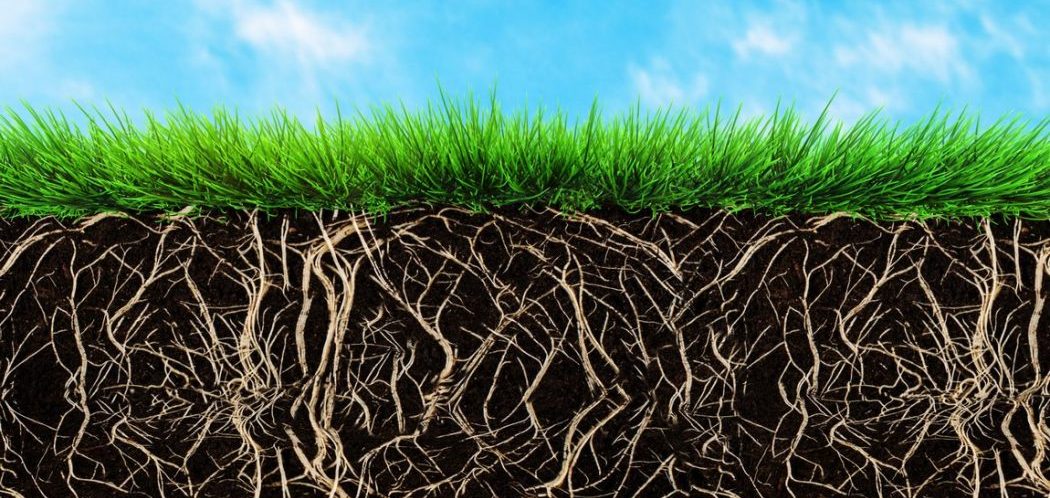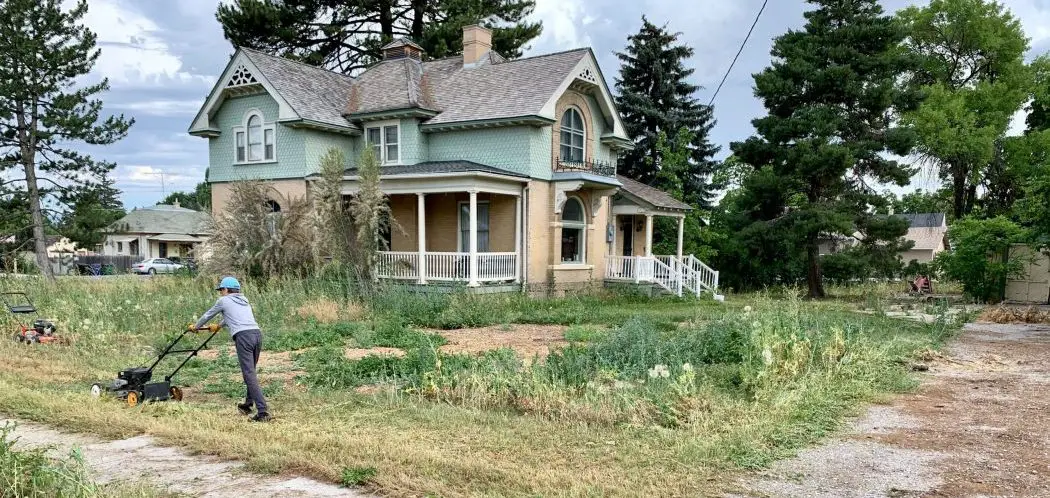Cracks within a lawn are not healthy and will likely keep your grass from growing to its fullest potential, if at all. A cracked lawn will uproot foliage and grass while contributing to erosion. On the other hand, a healthy lawn will be able to sustain lush, strong grass that withstand a drought or two.
Once a lawn starts to crack, it can seem as if all hope is lost as plants are ruined. Grass is unable to grow and the risk of erosion skyrockets. And besides, you are probably wondering why is my lawn cracking in the first place?
The main factor that contributes to cracks and dead grass patches in a lawn is dryness. A healthy lawn is able to handle these dry spells without any damage or cracking to the soil. The type of soil the lawn is comprised of also plays a role too.
A Cracked Lawn
While a cracked lawn is a sign of an unhealthy lawn, the good news is that it is completely treatable. Through a variety of preventative and healing measures, you can remove the cracks from your lawn and ensure that they do not return even during the worst droughts.
The measures that you have to take are not particularly hard and most of them do not have to be repeated often.
Once you understand your lawn, you should be able to keep it crack-free with ease!
While looking at your grass-less and cracked lawn may be disheartening now, you will be surprised by the comeback your lawn is able to make with the proper care.
What Causes Cracks in the Ground?
Cracks throughout your lawn are an issue with the topsoil, not a foundation issue.
If you are concerned about the foundation of your house and the cracks there are a few things you can check to be sure:
- The depth of your foundations.
- The type of soil your foundation is on.
- How wide the foundations are since the shrinking of the soil could potentially cause issues with your home’s foundation in rare events.
Cracks can be filled in with sand, compost tea, or compost, but are better fixed when aerated and watered.
Algae
Another problem may be present if you have any algae on your soil. It is easy to see, appearing as a dark green or sometimes black form close to the crust of the soil.
This algae makes it very difficult for seeds to germinate.
To fix this problem, rake through your soil to break down the surface.
Add some topsoil and seeds. Once seeds are added, make sure that the soil is kept moist for at least two full weeks.
At that point, you may fertilize the yard.
Continue the process repeatedly until it is impossible to see the bare soil!
The newly grown grass will help balance out the moisture within the soil and thus reduce cracking.
Clay
The exception to this is clay. Because of its many pores, clay both absorbs and lets go of water with much more ease than other soil types.
Clay will respond to rain by absorbing all the water and therefore expanding. On the other hand, clay responds to dry spells by releasing its remaining water and going on to shrink. It then hardens, making it a very difficult lawn to grow on. The shrinkage causes cracks to appear, which grow larger if not treated properly; the bigger the cracks, the more dehydrated your lawn is.
Once cracks have appeared in your lawn, water will be able to get into them more easily, which ultimately causes larger and more cracking so both wet and dry weather can exacerbate the problem.
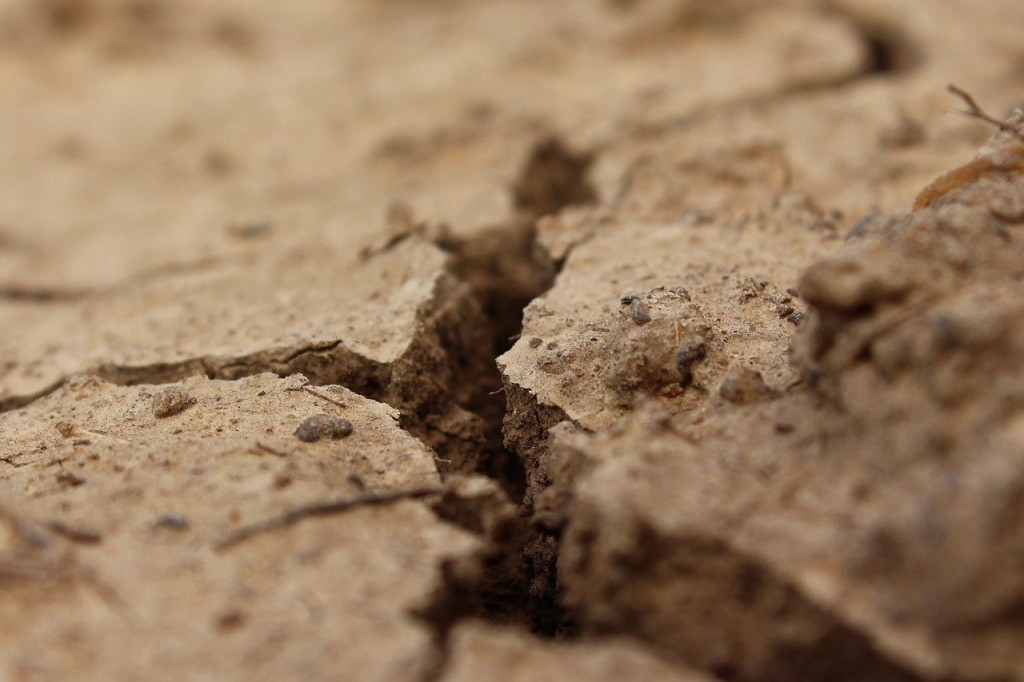
If you are unsure about what type of soil you have throughout your lawn, extracting a small sample of the dirt and putting it in a container to send or drop off at a local extension office is the best way to answer your questions.
What Is a Crack in the Ground Called?
A crack along the surface of something, such as your lawn, is known as a “fissure”. The word has Latin roots derived from the word fissura, or a small crack.
Fissure tends to specifically refer to a long and narrow crack. While the word can refer to a crack in any surface, such as ice, fissure most commonly refers to a crack in rock or the earth (or your lawn!).
Fissure can also be used as a verb to describe the action of cracks forming. For example, “when she stepped on the frozen over lake, the ice began to fissure.”
How Do I Stop My Ground From Cracking?
When it comes to preventing the crack-causing droughts, proper preparation is key for your yard. Luckily, there are a variety of things you can do to prevent your lawn from cracking in the future and even help with the restoration process.
Look for These Signs
The first step to prevention is education. There are a couple of signs that your lawn is struggling with the repercussions of a drought.
- Grass may appear a grey or olive color, as well as potentially wilting.
- A flat lawn that shows footprints when you walk across it is also struggling.
When a lawn shows these signs, you should avoid mowing your grass until after the lawn recovers.
When your lawn is safe for mowing, do not cut the lawn too short and instead set your mower to the highest setting to avoid removing more than a third of the grass blades at a time.
Water
Another great prevention technique is to water, water, water.
Up to three inches a week is sufficient for a thirsty lawn, whereas between one and two inches is adequate for a healthy lawn.
If your lawn is really struggling, you should consider investing in a sprinkler. Sprinklers will keep your lawn watered consistently and without any manpower from you!
If you do water the lawn yourself, water it in the early morning, right before dusk, and avoid walking on the soil once it is wet. You should water the lawn three to four times a week.

Compost
There are a number of things that you can add to your lawn to prevent future crackings. An inch of compost in early spring can be a lifesaver, and early spring is also a great time to seed your lawn.
I recommend this Landzie spreader for any compost topdressing job. This one can also be used for peat moss too.
Ensure that whatever lawn seed you choose is good for your conditions. For example, if your lawn is cracking, you may need a drought-tolerant mix!
Leaving lawn clippings on your yard is another way to reduce cracks as they act as a mulch to feed your lawn. With this in mind, do not over-fertilize your lawn. Instead, apply a fertilizer in spring, and no later than the second week of August.

Fertilize
Once your yard has recovered from its dry spell, it is time to fertilize it! Fertilizer feeds your lawn in order to promote growth and color in your grass.
There are three important nutrients within fertilizer for lawns and grass: potassium, nitrogen, and phosphorus. With a small yard, fertilizer can simply be added with a handheld spreader; just be sure to walk carefully when you use it to ensure even coverage across the yard.
With a bigger yard, fertilizer can be placed in a broadcast spreader. I use this spreader from Scotts (link to Amazon).
If you need any help, try reaching out to a local landscape contractor with any questions.
How Do You Fix Large Cracks in Clay Soil?
The first step to fixing cracked clay soil is not by watering it, although that is the ultimate solution being built towards.
Loosen up the Soil
First, you need to loosen up the soil. When your dehydrated soil cracks, it becomes more compacted as it shrinks. In order to loosen it back up, aeration is necessary as it creates tons of tiny holes within your compacted dirt, which does not cause any damage to the lawn.
Aeration
Aeration itself can be done in a few different ways. There are aeration shoes, which are somewhat similar to cleats as they have spikes on the bottom. The teeth create holes as you walk over your land.
For larger plots of land, a device that is similar to a small lawnmower and is known as a walk-behind aerator will be much more effective. Both types of aerators can be either bought or rented at your local home supplies store, and renting is often a great option since aeration does not have to be done often.
The holes created by the spikes or teeth of your aerator create spots within your lawn where water, air, and needed nutrients will be able to infiltrate the rock-hard, parched soil.
The holes are only temporary. Soil moves to fill them in as it is loosened, and this even helps to strengthen grass roots.
Water
Once your soil is sufficiently broken up and loosened, it is finally time to water your lawn!
The average lawn requires between one and two inches of water every week but since your lawn is cracking and therefore dehydrated, three inches would work as well.
The easiest way to ensure that your lawn gets enough to drink is by setting up a sprinkler.
I’d recommend putting down some hydretain too. It can help reduce overall water requirements.

